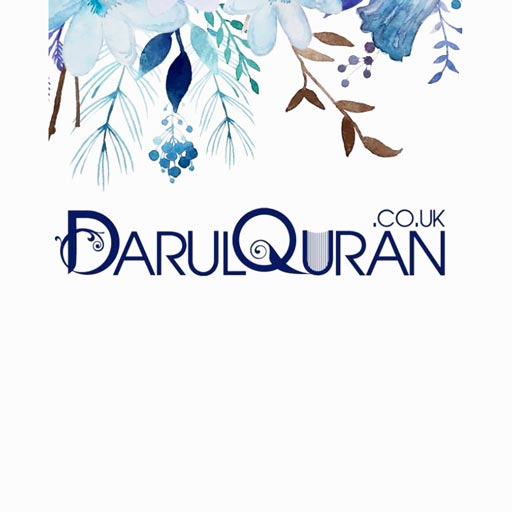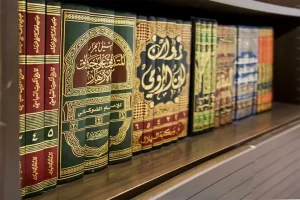Relate with people in a manner that if you die they will cry upon you and if you be alive they will love you.
Ali ibn Abi Talib(a)
Table of Contents
ToggleTilawat, or the recitation of the Holy Quran, is a revered and integral part of Islamic tradition. It involves reciting, studying, and reflecting on the verses. The recitation is often melodious and soothing, reflecting the deep spiritual significance of Quran.
Explanation of Modes of Tilawat
Tajwid Guidelines
Tajwid refers to the rules governing the proper pronunciation of the Grand Quran. It involves articulating the letters and enunciating them correctly, ensuring the beauty and precision of the recitation.
Tajwid, the art of reciting the Noble Quran with proper pronunciation and intonation, is an essential aspect of Islamic worship. It ensures that the words of Allah are recited accurately and with reverence. To achieve this, there are various modes of tilawat or recitation styles that adhere to Tajwid guidelines.
Different Recitation Modes
The Holy Quran, the sacred book of Islam, is not only revered for its content but also for its unique modes of recitation. These different modes, known as qira’at, add depth and beauty to the recitation of the Sacred Quran. They have been passed down through generations and are an integral part of Islamic culture.
Melodious Renditions
The recitation of the Noble Quran holds immense significance in the lives of Muslims worldwide. It is not merely a means of understanding and implementing the teachings of Islam, but also a source of spiritual solace and tranquility.
Amongst the various modes of recitation, melodious renditions stand out as one of the most captivating and enchanting ways to connect with the divine words.
Melodious renditions involve reciting the Quranic verses in a rhythmic and musical manner.
This mode of recitation has been practiced for centuries, with renowned scholars and Qaris perfecting their skills to create an atmosphere that resonates deeply with listeners.
The beauty lies in how these renditions evoke emotions, touch hearts, and allow individuals to experience a profound connection with Allah.
The melodious renditions are not mere entertainment; they serve a higher purpose.
They enhance concentration during recitation, making it easier for individuals to focus on every word being uttered.
The rhythmical flow aids in memorization as well, enabling students to commit verses to memory effortlessly.
Moreover, melodious renditions have a universal appeal that transcends language barriers. Regardless of whether one understands Arabic or not, the soothing melodies can be appreciated by people from all walks of life. They serve as a reminder that Islam is not confined to any particular culture or region but is meant for all humanity.
The Seven Modes of Tilawat in the Holy Quran
The first mode is known as Hafs An Asim, which is the most widely used and recognized mode. It is characterized by its clarity and simplicity, making it accessible to all Muslims around the world. The second mode is Warsh An Nafi’, which originated in North Africa and has a melodious tone that captivates listeners.
The third mode, Qalun An Nafi’, emphasizes pronunciation and enunciation.
It highlights the intricacies of Arabic phonetics and allows for a more detailed understanding of the text.
The fourth mode, Al-Duri An Abu ‘Amr, focuses on rhythm and flow. Its musicality creates a mesmerizing effect that enhances the spiritual experience.
The fifth mode is Khalaf An Hamzah, which places emphasis on elongation and prolongation of certain sounds.
This creates an enchanting melody that evokes deep emotions within listeners. The sixth mode, Ibn Kathir An Abu ‘Amr, emphasizes clarity and precision in pronunciation while maintaining a smooth flow.
Lastly, Shu’bah An Asim is known for its unique intonation patterns that give prominence to certain words or phrases within verses.
This mode adds emphasis and depth to the recitation.
These seven modes showcase the versatility and richness of Quranic recitation. They allow individuals from different regions to connect with the divine message in their own unique way while preserving its original essence. Whether it’s through simplicity or melodious tones, these modes enhance our understanding and appreciation of this sacred scripture.
Tilawat Modes
The sacred Quran is recited in seven modes, or Qira’at, each with its distinct pronunciation, rhythm, and emphasis, conveying various nuances and meanings.

Importance and Significance of Each Mode
Distinct Characteristics
Each mode has its own importance and significance in conveying the message of Allah effectively.
They serve as tools to enhance our understanding, connection, and appreciation for His divine words.
Whether it be through Tajwid’s focus on accuracy or Tartil’s emphasis on reflection or Hafs An Asim’s preservation efforts, these distinct characteristics contribute to a deeper engagement with the Quranic text.
Spiritual Impact
Each mode of tilawat holds immense importance in connecting with Allah’s message in different ways.
Whether through Tajwid ’s precision or Tartil’s reflection or Hadr’s melodious chanting or Murattal’s memorisation aid – every mode contributes to enhancing spirituality among Muslims worldwide.
Preservation of Tradition
Preserving traditions in each mode of Tilawat plays a vital role in maintaining the integrity and richness of Quranic recitation.
These traditions not only ensure accurate pronunciation but also promote unity among Muslims while fostering spiritual growth through reflection on Allah’s words. It is through these preserved modes that believers can truly appreciate the beauty and significance of the Glorious Quran in their lives.
Features of Tilawat of the Holy Quran
Diverse Interpretations
The diversity in interpretations arises from various factors such as language differences, cultural contexts, and individual perspectives. Quran was revealed in Arabic to Prophet Muhammad over 1400 years ago.
As it spread across different regions and languages, translations emerged to make it accessible to non-Arabic speakers.
However, translation inevitably introduces nuances that may lead to multiple interpretations.
Furthermore, cultural contexts play a significant role in shaping interpretations. Different societies have distinct customs and traditions that influence how they understand and apply religious teachings.
For instance, verses related to gender roles or social justice may be interpreted differently depending on cultural norms prevailing at a particular time or place.
Moreover, individuals bring their own perspectives and experiences when interpreting the Noble Quran. Personal biases can color one’s understanding of its message.
Scholars with different backgrounds may offer varying explanations based on their knowledge and understanding. Despite these diverse interpretations, Muslims believe in the fundamental unity and universality of the sacred Quran’s message.
They recognize that while there may be multiple valid interpretations, there is an underlying truth that transcends individual understandings.
Spiritual Enrichment
One feature of tilawat that contributes to spiritual enrichment is its ability to connect individuals with their Creator. When one recites the Holy Quran with sincerity and devotion, they establish a direct line of communication with Allah.
This connection fosters a sense of closeness and intimacy with the Divine, allowing individuals to experience tranquility and peace within their hearts.
Furthermore, tilawat serves as a means for self-reflection and introspection. Quran contains timeless wisdom and guidance for all aspects of life.
By engaging in its recitation, individuals are encouraged to examine their own actions, thoughts, and beliefs in light of these teachings.
This process leads to self-awareness and personal growth as one strives to align themselves with the values and principles outlined in the Sacred Quran.
Tilawat has the power to purify one’s soul. The verses of the Holy Quran are filled with divine blessings and mercy.
When recited sincerely, they have the ability to cleanse one’s heart from negative emotions such as anger, envy, or greed. This purification allows individuals to cultivate virtues such as patience, gratitude, and compassion.
Cultural and Linguistic Diversity
Cultural and linguistic diversity is a prominent feature of the tilawat, or recitation, of the Holy Quran.
Quran, being the sacred text of Islam, is recited by Muslims from various cultural backgrounds and in numerous languages around the world.
This diversity adds richness and depth to the understanding and interpretation of the Quranic verses.
The cultural diversity in tilawat can be observed through different styles and melodies used during recitation.
Each culture has its own unique way of reciting the Grand Quran, influenced by their musical traditions and vocal techniques.
For example, in South Asia, Qaris (reciters) often employ melodic patterns known as Maqamat to enhance the beauty of their recitation.
In contrast, Arab Qaris focus on perfecting their pronunciation and enunciation to maintain the purity of Arabic language.
Furthermore, linguistic diversity is another significant aspect of tilawat. The sacred Quran was revealed in Arabic but has been translated into numerous languages to make it accessible to people worldwide.
This allows individuals from diverse linguistic backgrounds to engage with the teachings of Islam through their native tongues.
The presence of cultural and linguistic diversity in tilawat highlights Islam’s inclusive nature. It emphasizes that Islam transcends boundaries and welcomes people from all walks of life.
Moreover, it encourages Muslims to appreciate different cultures and languages while deepening their connection with the Glorious Quran.
In conclusion the Noble Quran encompasses various modes of expression including narrative expository poetic prophetic and didactic modes.
Each mode serves a unique purpose in conveying the message of Islam and providing guidance to believers.
These modes not only make the Quran a comprehensive religious scripture but also contribute to its literary excellence.
The diverse modes ensure that the Quran’s teachings reach and resonate with a wide range of readers making it a timeless and universal source of wisdom.

















